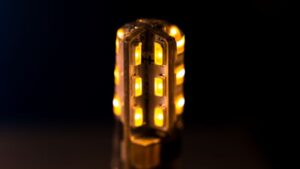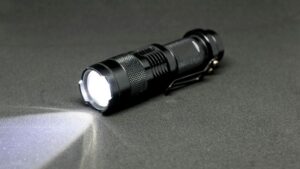The terms LEP and LED often confuse many consumers. Both technologies have revolutionized how we illuminate our spaces, but they function quite differently from each other.
LEP (Light Emitting Plasma) uses electromagnetic energy to excite plasma, creating intensely bright light with excellent color rendering, while LED (Light Emitting Diode) generates light through semiconductor diodes that emit photons when electrical current passes through them. This fundamental difference impacts everything from energy efficiency to applications.

Learn more in our article to make an informed purchasing decision.
Overview of LEP and LED Technologies
Light Emitting Polymer (LEP) and Light Emitting Diode (LED) technologies represent two distinct approaches to creating efficient light sources.
History of LEP
Light Emitting Polymers emerged in the late 1980s when researchers at Cambridge University discovered electroluminescence in organic polymers. The breakthrough came in 1989 when Jeremy Burroughes, Donal Bradley, and Richard Friend demonstrated light emission from poly(p-phenylene vinylene).
This discovery sparked interest in developing flexible displays and lighting solutions. By the mid-1990s, companies like Cambridge Display Technology (CDT) began commercializing LEP technology.
The early 2000s saw significant improvements in LEP efficiency and lifespan. Researchers developed new polymer compounds that emitted across the visible spectrum, enabling full-color displays.
Despite promising advances, LEP initially struggled with shorter lifespans and lower efficiency compared to inorganic alternatives. Recent innovations have addressed many of these limitations, making LEP increasingly viable for commercial applications.
History of LED
LEDs have a longer history, beginning in 1962 when Nick Holonyak Jr. at General Electric created the first visible-spectrum LED. These early red LEDs had limited brightness and efficiency but represented a revolutionary advancement.
Throughout the 1970s, new semiconductor compounds expanded the color range to include green and yellow. Blue LEDs proved particularly challenging, with significant breakthroughs only coming in the early 1990s when Shuji Nakamura developed high-brightness blue LEDs.
The invention of blue LEDs enabled white light production, either through phosphor conversion or RGB color mixing. This advancement opened doors to general lighting applications.
LED technology has seen remarkable progress in efficiency and cost reduction. From indicator lights in electronics to today’s mainstream lighting solutions, LEDs have experienced perhaps the fastest adoption rate of any lighting technology in history.
Basic Principles of LEP
LEPs operate through electroluminescence in conjugated polymers. These specialized plastic materials contain alternating single and double carbon bonds that create semiconductor-like properties.

When voltage is applied, the polymer layer sandwiched between electrodes allows electrons and holes to combine, releasing energy as photons (light). The chemical structure of the polymer determines the wavelength of light emitted.
Key components of LEP devices include:
- Anode (typically transparent)
- Hole transport layer
- Emissive polymer layer
- Electron transport layer
- Cathode
LEPs offer unique advantages like solution processing, which enables printing techniques for manufacturing. This allows for potentially lower production costs and flexible substrates.
The polymeric nature of LEPs means they can be produced in large, uniform sheets and can conform to curved surfaces. This flexibility has made them particularly interesting for next-generation display and lighting applications.
Basic Principles of LED
LEDs function through electroluminescence in semiconductor materials. The heart of an LED is a p-n junction where electron-hole recombination releases energy as photons.
Unlike incandescent bulbs that produce light through heating, LEDs convert electrical energy directly to light with minimal heat generation. This direct conversion contributes to their high efficiency.
LED construction includes:
- Semiconductor die (chip)
- Wire bond connections
- Reflector cup
- Encapsulation for protection
- Heat sink (for high-power LEDs)
The wavelength (color) of light depends on the semiconductor material’s band gap. Common materials include:
| Material | Color Range |
| AlGaInP | Red to yellow |
| InGaN | Green to blue |
| AlGaAs | Red to infrared |
Modern white LEDs typically use a blue LED chip with phosphor coating that converts some blue light to yellow, creating light that appears white to human eyes. This technology enables precise control over color temperature to suit different applications.
Comparing LEP and LED Lighting
Light Emitting Plasma (LEP) and Light Emitting Diode (LED) technologies represent two advanced lighting solutions with distinct characteristics.
| Feature | LEP (Light Emitting Plasma) | LED (Light Emitting Diode) |
| Energy Efficiency | 70-120 lumens/watt | 100-200 lumens/watt |
| Lifespan | 20,000-30,000 hours | 50,000-100,000 hours |
| Color Rendering Index (CRI) | 94-98 | 70-95 |
| Initial Cost | Higher ($500-1,200/fixture) | Lower ($350-900/fixture) |
| Operating Cost | Higher due to less efficiency | 15-25% lower over lifetime |
| Temperature Performance | Better performance in high temps | May degrade in extreme heat |
| Durability | Good, but contains plasma bulbs | Excellent, solid-state components |
| Environmental Impact | Contains inert gas, requires careful disposal | No hazardous materials, easier disposal |
| Best Applications | Art galleries, surgical rooms, color-critical work | General lighting, offices, warehouses, retail |
| Maintenance | Requires bulb replacement | Minimal to none |
Energy Efficiency
LED lighting stands out for its exceptional energy efficiency, converting up to 90% of energy into light with minimal heat waste. Most commercial LED fixtures achieve 100-200 lumens per watt, making them among the most efficient lighting technologies available.
LEP lighting, while still energy-efficient, typically produces 70-120 lumens per watt. This places it below LED efficiency but significantly above traditional lighting sources like metal halide or high-pressure sodium.
The gap between these technologies becomes more apparent in large-scale installations where LED systems can reduce energy consumption by 15-25% compared to equivalent LEP setups.
For practical applications, this efficiency difference translates to tangible savings. A 10,000 square foot warehouse might save $1,200-1,800 annually by choosing LED over LEP technology.
Lifespan and Durability
LEP lighting typically offers operational lifespans of 20,000-30,000 hours. These systems maintain strong lumen maintenance, retaining about 70% of their initial brightness at the end of their rated lifespan.
LED technology surpasses LEP with impressive lifespans of 50,000-100,000 hours under proper operating conditions. High-quality LED fixtures can maintain over 70% of their original brightness even after 50,000 hours of operation.
Both technologies demonstrate excellent resistance to impact and vibration, making them suitable for demanding environments. LEP systems, however, contain plasma bulbs that are slightly more vulnerable to physical damage than solid-state LED components.
Temperature tolerance also differs between these technologies. LEDs may experience performance degradation in extremely hot environments, while LEP systems often perform more consistently across wider temperature ranges.
Color Rendering Quality
LEP lighting excels in color rendering with typical CRI (Color Rendering Index) values of 94-98. This near-perfect color reproduction creates natural-looking illumination that reveals subtle color variations accurately.
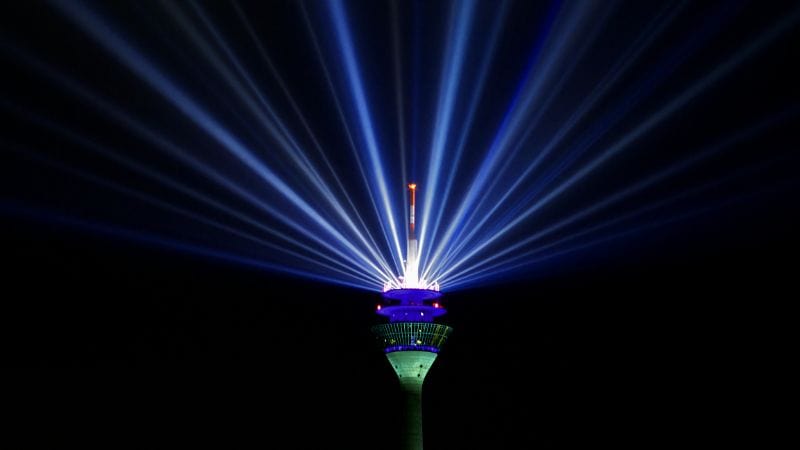
LEP’s full-spectrum light closely mimics natural sunlight, producing a balanced spectrum without significant gaps. This makes LEP particularly valuable for applications where color accuracy is paramount.
LED technology has improved substantially, with premium fixtures now achieving CRI values of 80-95. However, standard LEDs typically fall in the 70-85 CRI range, creating adequate but less perfect color reproduction.
Cost Comparison
Initial investment for LEP systems typically runs 30-50% higher than comparable LED installations. A single commercial-grade LEP fixture might cost $500-1,200, while an equivalent LED fixture averages $350-900.
The long-term operational costs favor LED technology due to its superior energy efficiency and longer lifespan. Over a 10-year period, LED systems generally deliver 15-25% lower total cost of ownership despite higher initial costs for premium models.
Maintenance requirements also impact overall costs. LEP bulbs eventually require replacement, while LED fixtures often operate for the entire system lifespan without component replacement.
Recent market trends show LED prices continuing to decline by 5-10% annually, while LEP costs have stabilized. This widening price gap makes LEDs increasingly attractive for cost-conscious projects.
Environmental Impact
Both lighting technologies offer significant environmental advantages over traditional lighting systems. LEDs contain no mercury or hazardous gases, making disposal safer and simpler.
LEP systems contain small amounts of inert gas and metals in their bulbs. While not classified as hazardous waste, they require more careful disposal considerations than LEDs.
The carbon footprint of both technologies is primarily determined by their energy consumption. LED’s superior efficiency typically results in 15-25% lower lifetime carbon emissions compared to equivalent LEP installations.
Manufacturing processes for both technologies have improved, with reduced resource requirements and waste generation. LED production has become particularly efficient as manufacturing scale has increased globally.
Many manufacturers of both LEP and LED systems now offer take-back programs for end-of-life products, ensuring proper recycling of components and minimizing landfill impact.
Applications of LEP and LED
LEP Applications
Light Emitting Polymers excel in applications requiring flexible, thin, and lightweight lighting solutions. Their ability to be manufactured on flexible substrates has revolutionized the display industry.
- Consumer Electronics: LEP technology powers many OLED displays in smartphones, tablets, and wearable devices. Their vivid colors and excellent contrast ratios provide superior viewing experiences.
- Lighting Solutions: Architectural lighting benefits from LEP’s ability to create uniform illumination across large, potentially curved surfaces. Designers appreciate the creative freedom LEP panels offer for innovative lighting concepts.
- Automotive Applications: Increasingly, car manufacturers incorporate LEP technology into dashboard displays and interior ambient lighting. The flexibility allows seamless integration with curved interior surfaces.
- Medical Devices: LEP displays are used in portable medical equipment where low power consumption and lightweight properties are essential. Their thin profile helps create more compact devices.
LED Applications
LEDs dominate lighting applications due to their efficiency, longevity, and robust performance. Their versatility has allowed them to replace traditional lighting sources in most sectors.
- General Lighting: From residential to commercial and industrial spaces, LEDs provide energy-efficient illumination. Office buildings, warehouses, and retail environments benefit from their long lifespan and reduced maintenance costs.
Specialized Lighting: LEDs excel in task-specific applications such as:
- Plant growth lights with tailored spectrums
- Museum lighting with minimal UV emissions
- Medical examination lights with precise color rendering
- Digital Signage: LED displays power billboards, information screens, and scoreboards. Their brightness enables visibility even in direct sunlight, making them ideal for outdoor applications.
- Automotive Lighting: Modern vehicles utilize LEDs for headlights, taillights, and indicator signals due to their instant response time and reliability in harsh conditions.
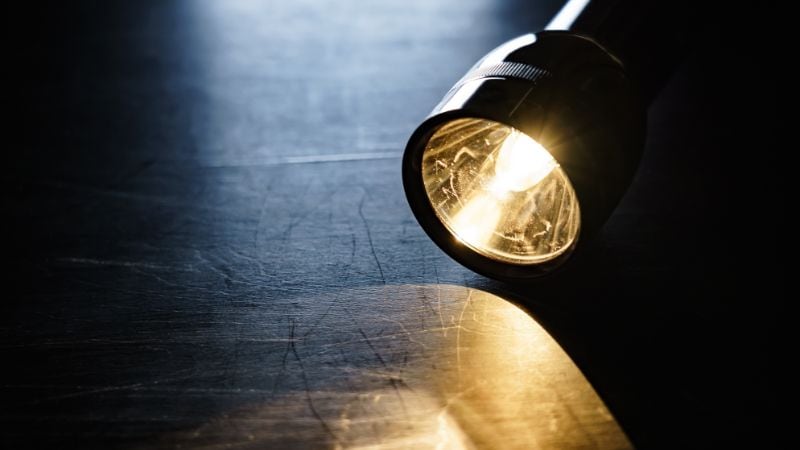
Real-World LED Solutions from MF Opto
MF Opto demonstrates the versatility of LED technology through comprehensive product lines that enhance various professional and consumer applications:
- Portable Work Lights: Professional-grade LED work lights featuring COB technology, delivering up to 2000 lumens with built-in power banks and magnetic mounting options
- Safety & Emergency: LED road flares and warning lights with 360° illumination and multiple flash patterns for enhanced visibility
- Outdoor & Recreation: Durable camping lanterns and flashlights offering multiple brightness modes and extended runtime
- Professional Tools: Inspection lamps and headlamps with motion sensors and adjustable beam patterns for hands-free operation
Hybrid Solutions
Combining LEP and LED technologies creates innovative lighting and display solutions that capitalize on the strengths of both technologies.
- Smart Lighting Systems: Hybrid solutions integrate rigid LED components for primary illumination with flexible LEP panels for accent lighting and decorative elements. This approach balances efficiency with design versatility.
- Advanced Displays: Some manufacturers develop displays using LED backlighting with LEP color filters to achieve better energy efficiency while maintaining color quality. This combination delivers enhanced visual performance.
- Architectural Applications: Building facades often employ both technologies—LEDs for focused spotlighting and LEP panels for large-surface ambient lighting effects. The combination creates dynamic and energy-efficient lighting scenarios.
- Automotive Interfaces: Modern vehicles increasingly feature LED indicators and warning lights alongside LEP-based infotainment displays. This hybrid approach optimizes visibility and user experience while meeting stringent automotive requirements.
Technical Specifications
These specifications explain why each technology performs differently in real-world scenarios.
LEP Technical Data
LEP (Light Emitting Plasma) systems operate by creating light through radio frequency (RF) exciting a quartz bulb filled with noble gases and metal halides. This creates a small but intense plasma light source.
Typical LEP lights offer luminous efficacy between 70-90 lumens per watt, which is quite efficient compared to traditional lighting technologies.
The color rendering index (CRI) of LEP systems often exceeds 90, providing excellent color accuracy that closely resembles natural daylight.
LEP systems generate a broad spectrum of light with color temperatures typically ranging from 5000K to 6000K, creating a bright white light ideal for outdoor and large area illumination.
Most LEP fixtures have operational lifespans between 30,000-50,000 hours before requiring maintenance or replacement.
LED Technical Data
LED (Light Emitting Diode) technology produces light when electrons move through a semiconductor material, creating photons. This solid-state lighting approach offers remarkable efficiency and versatility.
Modern LED systems achieve impressive efficacy ratings of 100-200 lumens per watt, making them among the most energy-efficient lighting options available today.
LEDs can be manufactured with CRI values ranging from 70 to 98, with higher-end products offering exceptional color rendering capabilities.
Color temperature options for LEDs are extremely versatile, spanning from warm 2700K to cool 6500K, allowing for customization across different applications.
The lifespan of quality LED fixtures typically ranges from 50,000 to 100,000 hours, significantly outlasting most alternative lighting technologies.
LED fixtures can be extremely compact and directional, enabling precise light control without additional reflectors or optics.
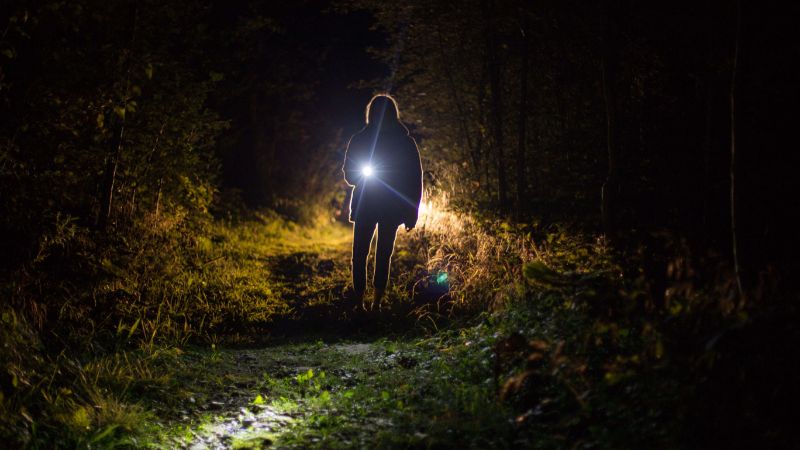
Ready to Enhance Your Lighting Solutions?
Contact MF Opto’s expert team for:
|
Contact Our Sales Team and Request a Quote



